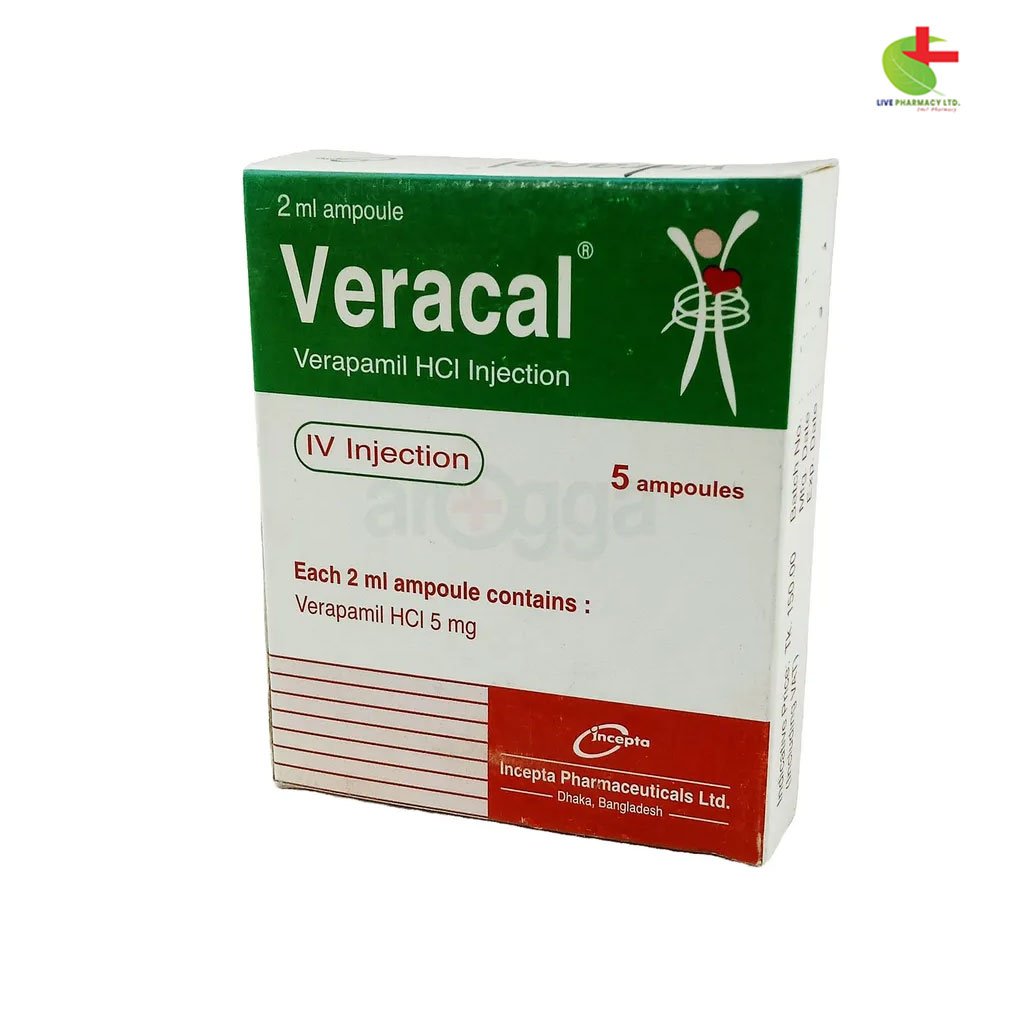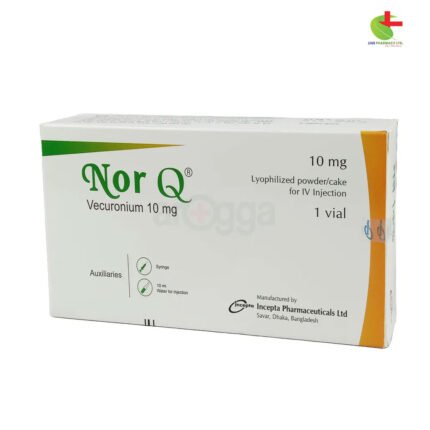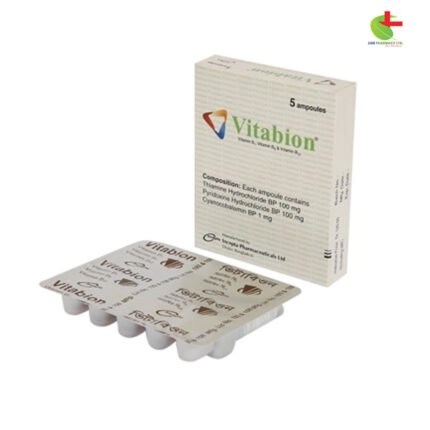Veracal
50.00৳ Injection
- Veracal is a calcium channel blocker indicated for essential hypertension, angina pectoris, and supraventricular arrhythmias.
- Available in tablet and injection forms, it effectively manages tachycardia, acute hypertension, and arrhythmias.
- Veracal inhibits calcium influx in cardiomyocytes and smooth muscle cells, providing antiarrhythmic and antihypertensive effects.
- Use with caution in patients with left ventricular dysfunction and during pregnancy, as it crosses the placental barrier.
 Brand
Brand
|
Incepta Pharmaceuticals Ltd |
|---|---|
 Generics
Generics
|
Verapamil Hydrochloride |
 Type
Type
|
IV Infusion |
Indications
Veracal Tablet:
- Management of essential hypertension
- Treatment of angina pectoris and prevention of recurrent myocardial infarction
- Control of supraventricular arrhythmias
Veracal Injection:
- Treatment of tachycardias, including:
- Paroxysmal supraventricular tachycardia
- Atrial fibrillation with rapid ventricular response (excluding WPW syndrome)
- Atrial flutter with rapid conduction
- Extrasystoles
- Acute hypertension
- Acute coronary insufficiency
- Prophylaxis and management of ectopic arrhythmias (mainly ventricular extrasystoles) during halothane anesthesia, as well as in conjunction with adrenaline in halothane anesthesia.
Use Veracal as directed by a registered medical practitioner.
Description
Veracal functions as a calcium ion influx inhibitor, obstructing the inward movement of calcium into cardiomyocytes, smooth muscle cells, and the His-Purkinje system. The tablets are formulated for sustained release in the intestines, ensuring prolonged efficacy.
Pharmacology
Verapamil is classified as an L-type calcium channel blocker, exhibiting antiarrhythmic, antianginal, and antihypertensive properties. Immediate-release verapamil has a relatively brief duration of action, necessitating administration 3 to 4 times daily. However, extended-release formulations enable once-daily dosing. Due to its negative inotropic effects (reducing myocardial contraction strength), verapamil is contraindicated in patients with severe left ventricular dysfunction or hypertrophic cardiomyopathy, as its use may exacerbate these pre-existing conditions.
Dosage & Administration
Verapamil Tablet:
- Individualize the Verapamil dosage through titration, preferably taken with food.
- For essential hypertension, initiate with 180 mg in the morning. If the response is insufficient, consider increasing to 240 mg each morning, 180 mg in the morning plus 180 mg in the evening, or 240 mg every 12 hours.
- For angina, the typical dosage ranges from 80 mg to 120 mg, administered three times daily.
- For arrhythmias in patients already on digitalis, administer Verapamil in divided doses of 240 mg to 360 mg, depending on condition severity. Occasionally, doses up to 180 mg per day may be necessary.
Verapamil Injection:
- Adults: Administer 5 mg intravenously, slowly, for tachycardias and hypertensive crises, with possible repeats every 5 to 10 minutes. For continuous drip infusion, maintain at 5-10 mg/hour in physiological saline, glucose, or similar solutions, typically not exceeding a total of 100 mg/day.
- Children:
- Newborns: 0.75-1 mg (0.3-0.4 ml)
- Infants: 0.75-2 mg (0.3-0.8 ml)
- Children (1-5 years): 2-3 mg (0.8-1.2 ml)
- Ages 6-14 years: 2.5-5 mg (1-2 ml)
Administer the injection slowly under electrocardiographic monitoring until the desired effect is achieved. For intravenous infusion in hypertensive crises, start at 0.05-0.1 mg/kg/hour, increasing at 30-60 minute intervals if necessary, with a total average dose of up to 1.5 mg/kg/day.
Use Veracal as directed by a registered medical practitioner.
Interaction
Veracal may enhance plasma levels when taken with CYP3A4 inhibitors (e.g., erythromycin, ritonavir) and cimetidine. Conversely, CYP3A4 inducers (e.g., rifampicin), phenobarbital, and sulfinpyrazone may lower plasma levels. Co-administration with aspirin may heighten bleeding risk. Additional interactions may increase bradycardic and hypotensive effects with telithromycin, while AV block may be exacerbated by clonidine. It may also elevate plasma levels of various cardiac medications, immunosuppressants, and lipid-lowering agents, leading to potential adverse effects.
Contraindications
- Severe left ventricular dysfunction
- Hypotension or cardiogenic shock
- Sick sinus syndrome (except in patients with a functioning artificial ventricular pacemaker)
- Second or third-degree atrioventricular (AV) block (except in patients with a functioning artificial pacemaker)
- Patients with atrial flutter or atrial fibrillation accompanied by an accessory bypass tract (e.g., Wolff-Parkinson-White syndrome)
- Known hypersensitivity to verapamil hydrochloride
Side Effects
Veracal is generally well tolerated, though some side effects may occur, particularly in clinical trials with approximately 5,000 patients:
- Digestive System: Constipation, nausea
- Cardiovascular System: Hypotension, edema, congestive heart failure (CHF), pulmonary edema, bradycardia, AV block
- Respiratory System: Upper respiratory tract infections
- Nervous System: Dizziness, headache, fatigue
- Skin: Rash, flushing
- Hepatic: Elevated liver enzymes
Pregnancy & Lactation
Currently, there are no sufficient studies on the use of Veracal in pregnant women. This medication should only be administered during pregnancy if clearly necessary. Verapamil crosses the placental barrier and can be found in umbilical vein blood at delivery. It is also excreted in breast milk; therefore, nursing should be paused while using Verapamil.
Precautions & Warnings
Caution is advised in cases of first-degree AV block, bradycardia (<50 beats/min), hypotension (<90 mm Hg systolic), atrial fibrillation/flutter, and simultaneous pre-excitation syndrome (e.g., WPW syndrome). Prior compensation with cardiac glycosides/diuretics may be necessary for heart failure patients. Veracal may impair the ability to operate machinery or drive, particularly in the initial treatment phases and with concurrent alcohol consumption, which can significantly slow alcohol elimination and prolong its effects.
Overdose Effects
Overdose treatment is supportive. Beta-adrenergic stimulation or parenteral calcium solutions may increase calcium ion flux and are used in overdose management. Veracal cannot be removed by hemodialysis.
Therapeutic Class
Calcium Channel Blockers
Storage Conditions
Store Veracal at temperatures not exceeding 30°C. Protect from light and keep out of reach of children.













Reviews
There are no reviews yet.